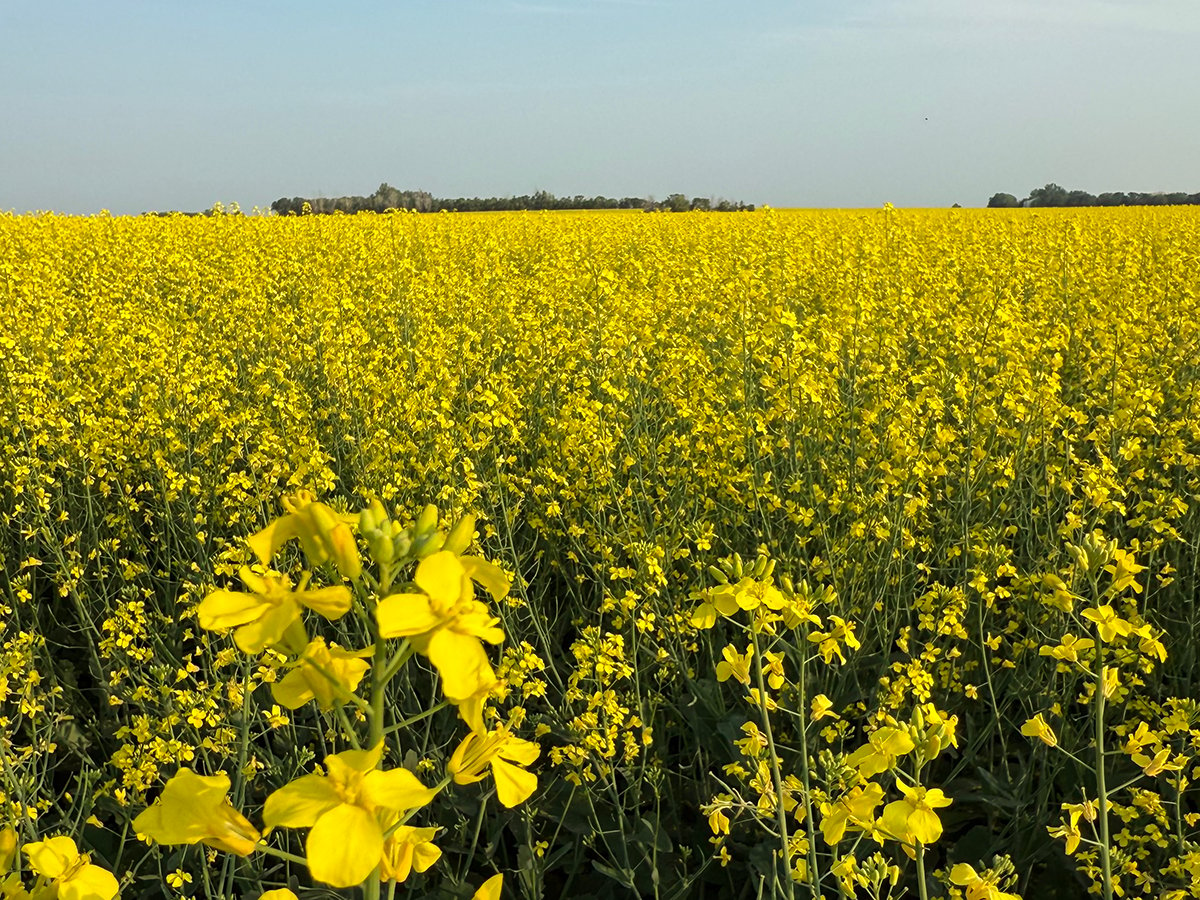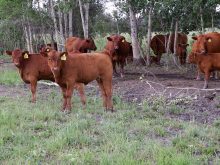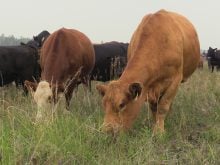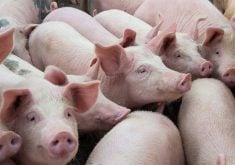GLEN LEA, Man. – Don Chaput doesn’t hesitate when asked to walk into a pen full of big gestating sows and mingle with them.
“Oh, sure, I do that all the time,” he said. Quickly, he’s surrounded by a gaggle of the giant pink ladies, who seem delighted he’s there – perhaps hoping he’s brought some feed or willing to offer free scratches.
A couple of minutes later, he disentangles himself from the sows, heads back to the edge and climbs over to the alley.
Read Also

Canola support gets mixed response
A series of canola industry support measures announced by the federal government are being met with mixed reviews.
But Chaput, who is acting manager of the swine barns at the University of Manitoba’s Glen Lea research farm, has just done something that would terrify many hog producers, and it holds many back from considering switching to an open pen system.
Prairie Swine Centre animal behaviour specialist Harold Gonyou said he works with pens full of pregnant sows all the time and has no problems, nor do the barn workers, but knows producers are skeptical.
“There are a lot of people who are hesitant to walk into a pen of sows, and yet they’re some of the most calm animals you can have,” said Gonyou.
“The sows are very quiet in that sort of system.”
Producers’ nightmares are well founded, welling up from memories of old, primitive sow barns.
In those systems, sows were housed in pens, feed was dumped onto the floor of the pen, and the sows battered, bashed and bit each other in attempts to get the biggest shares.
“That’s the kind of situation producers want to avoid,” said Gonyou.
“They just assume that’s the kind of system they would be using.”
The evolution of the sow stall system stopped this bullying and abuse, and allowed producers to individually manage and monitor sow nutrition and health.
This not only produced healthier, more productive sows, but also visibly improved the condition of almost all of them.
But the development of electronic sow feeders, which allow only one sow at a time to feed and do not allow aggressive sows to get more than their allotted portion, has reduced the main cause of sow-on-sow aggression, and allowed sows to be raised in pens with no reduction in productivity or increase in cost.
The gestating sows in open pens at Glen Lea were calm during a recent visit.
In both solid-floored and slatted-floor systems, the sows were friendly, relaxed and lacking any signs of recent scratches or bites. They lay about in groups, with individuals occasionally approaching the electronic sow feeder.
Researchers and barn workers say sows will always fight when they’re first mixed, but most of the violence is over after a couple of hours as the pecking order is established.
For the rest of the time, they cohabitate quietly.
Gonyou hopes his research and that of colleagues at the University of Manitoba will help producers embrace a different system.
Producers and barn workers need to develop skills in two areas to successfully work in an open housing system, he said. Handling animals requires more sensitive husbandry practices than required for a stalled sow.
And feed intake can’t be assessed by a worker walking down the alley and looking in each sow’s feeder, because a single feeder serves all the sows over a long period.
“Your first job in the morning is not to go and look at the sows, it is to get a print-out from the computer.”
Gonyou said he knows barn workers who think nothing of taking a cup of coffee into a sow pen when they’re checking the animals, and even sitting on one of the sows while consuming the java.
“They’re that relaxed.”















